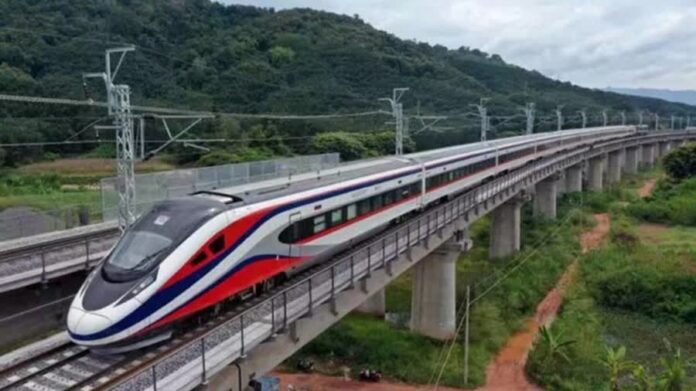Thailand is developing a high-speed rail project connecting Bangkok with the Laos-China railway, reducing travel time and enhancing regional connectivity as part of China’s Belt and Road Initiative. The Pan-Asian rail network, involving Thailand, Laos, and Malaysia, has the potential to transform infrastructure and trade connectivity in the region. China’s expanding railway investments in Southeast Asia indicate a growing focus on regional transportation and economic integration.
Thailand’s High-Speed Rail Project
Thailand is working on an 873km high-speed rail project linking Bangkok to the Laos-China railway, aiming for completion by 2028. This connectivity will enable seamless travel and transport from Bangkok to Kunming, China’s Yunnan province. Key aspects include significant reduction in travel time, enhanced trade connectivity, and integration under China’s Belt and Road Initiative (BRI).
Regional Infrastructure and Integration
The Pan-Asian rail network, involving Thailand, Laos, and Malaysia, promises to transform regional trade infrastructure. China’s expanding railway investments in Southeast Asia, such as Vietnam and Indonesia’s railway projects, underscore a strong focus on enhancing regional transportation and economic integration. The Thai administration under Prime Minister Srettha Thavisin is committed to accelerating the project’s completion to maximize these benefits.
The Thailand-China Railway Project is a significant initiative aimed at enhancing regional connectivity and fostering economic growth. This project is a part of China’s Belt and Road Initiative (BRI), a global development strategy involving infrastructure development and investments in nearly 70 countries and international organizations.
The Thailand-China Railway Project comprises two main routes. The first route connects Kunming in China’s Yunnan province to Bangkok, while the second route links the coastal city of Sihanoukville in Cambodia to Kunming. The project’s primary focus is the construction of a high-speed railway line that will reduce travel time between Kunming and Bangkok to approximately 10 hours from the current 60 hours.
The project holds immense significance for Thailand. it is expected to boost the country’s economy by enhancing trade, tourism, and investment opportunities. The high-speed rail link will facilitate the movement of goods and people, reduce logistics costs, and stimulate economic activities in the regions it traverses. Moreover, it will provide Thailand with access to China’s vast market, further strengthening bilateral trade relations.
The Thailand-China Railway Project is also a testament to the deepening cooperation between Thailand and China. The two nations have collaborated closely on various aspects of the project, including design, construction, and operation. This cooperation is not limited to the government level but extends to private sector involvement as well.
However, the project is not without challenges. Issues related to financing, environmental impact, and local community displacement need to be addressed. There are also concerns about the project’s potential to increase Thailand’s debt to China. Despite these challenges, the Thailand-China Railway Project is a bold step towards enhancing regional connectivity and promoting economic development.
The Thailand-China Railway Project is more than just a transportation infrastructure project. It is a symbol of regional cooperation and integration. It underscores the shared commitment of Thailand and China to promote sustainable development, enhance regional connectivity, and build a community with a shared future for mankind. As the project progresses, it is expected to bring about transformative changes in the region, benefiting not just Thailand and China, but the entire ASEAN community.
Source : The Thailand-China Railway Project: Enhancing Regional Connectivity



